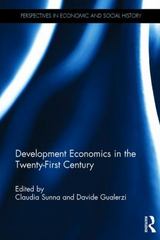agricultural commodities by each farm is given by C(q). Each farm's marginal costs increase at an increasing rate as they produce more crops , in other words , c' > 0, c" >- 0. For purposes here we assume that each farm receives a subsidy for selecting a level of crop production that is below from fixed output (i.e., crop ) level set by a regulator , whose goal is to achieve lower concentrations of pesticides in the State's water bodies Let the subsidy equal 5 = a ( 4 - q) where a = BD' represents the marginal social costs (i.e ., the damages caused by the pesticides that the farms are emitting ) of producing q, and B is an emissions coefficient linking pesticides s to the amount of output the farms produce in this case represents the output that the farm would produce in the marketplace in the absence of the any policy on subsidies to reduce pollution if q = @ , the producer receives no subsidy, 5 = 0 (1) Given profit -maximization as the goal for a typical farm , how would marginal costs of producing output change with the subsidy program for a representative farm ? How would a representative farm's average costs change with the subsidy program ? Explain what effect the subsidy would have on the representative farm's marginal and average costs and its supply curve in the short run . (2) Consider the long run . What effect would the subsidy program have on the long -run equilibrium price and output of agricultural crops in the State ? What effect would the subsidy have on the number of farms s producing agricultural commodities in the State ? What would happen to pesticide pollution levels in the State ? (3) Suppose that in addition n to the subsidy program , a tax equal to marginal social damages from pesticides , a, is levied on the farms by the State Environmental Regulatory Agency. (In this case, the subsidy program is designed with a goal of being revenue -neutral from the standpoint of the State government ). What will be the impact of the combined subsidy /tax program on the production level of crops for a ypical farm and overall pollution levels from the industry ? (4) Many economists argue that the root cause of subsidies is "rent -seeking " behavior on the part of firms . Explain the concept of "rent -seeking " in the context of subsidies that affect the environment . Describe one clear -cut example of rent -seeking behavior that results in a subsidy that adversely affects environment quality







